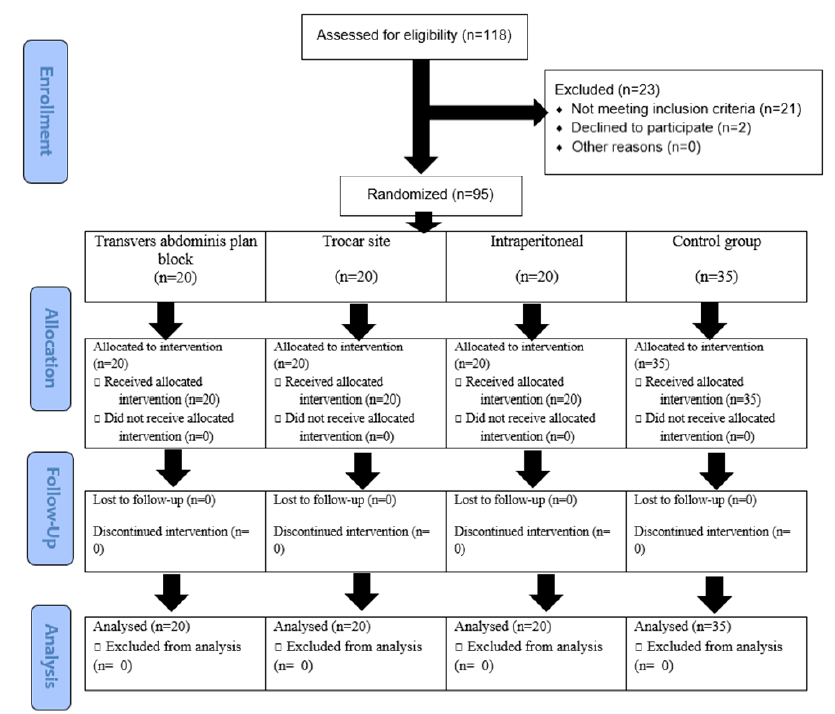Efficacy of trocar site, intraperitoneal, and laparoscopically guided posterior transversus abdominis muscle bupivacaine injection for reducing pain after laparoscopic hysterectomy surgery: A double-blind randomized clinical trial
DOI:
https://doi.org/10.15419/bmrat.v10i9.831Keywords:
Laparoscopic hysterectomy surgery, Pain, injection cite, Randomized clinical trialAbstract
Background: Few studies have investigated the pain-reducing effects of bupivacaine after laparoscopic hysterectomy. Therefore, this study compared the efficacy of three methods of bupivacaine injection?subcutaneous injection into the trocar site, intraperitoneal injection, and posterior transversus abdominis muscle block under laparoscopic guidance?for reducing pain after laparoscopic hysterectomy; the efficacy of each method was also compared with that of placebo.
Methods: This double-blind randomized clinical trial study included 95 patients with good general health who underwent elective laparoscopic hysterectomy for benign disease in 2021. The patients were allocated into three intervention groups (subcutaneous injection of 10 cc bupivacaine 0.25%, heavy under trocar sites; 10 cc bupivacaine 0.25%, heavy injection into the transversus abdominis plane block; and 10 cc bupivacaine 0.25%, heavy intraperitoneal injection) and a control group. Abdominal and shoulder pain 2?4, 8, 12, and 24 h after the surgery were compared between groups.
Results: The four groups were homogenous in age, weight, height, body mass index, surgery duration, surgery type, and family history of cancer (P > 0.05). The mean abdominal and shoulder pain score significantly decreased from the first time point (hours 2?4) to 8, 12, and 24 hours after surgery in the trocar site, intraperitoneal, and control groups (P < 0.001). However, we did not observe a significant decrease in abdominal and shoulder pain in the transversus abdominis plane block group (P > 0.05).
Conclusion: The present study indicates that bupivacaine administration methods of transversus abdominis plane block and trocar site injection are effective and safe for reducing pain following laparoscopic hysterectomy.

Published
Issue
Section
License
Copyright The Author(s) 2017. This article is published with open access by BioMedPress. This article is distributed under the terms of the Creative Commons Attribution License (CC-BY 4.0) which permits any use, distribution, and reproduction in any medium, provided the original author(s) and the source are credited.
